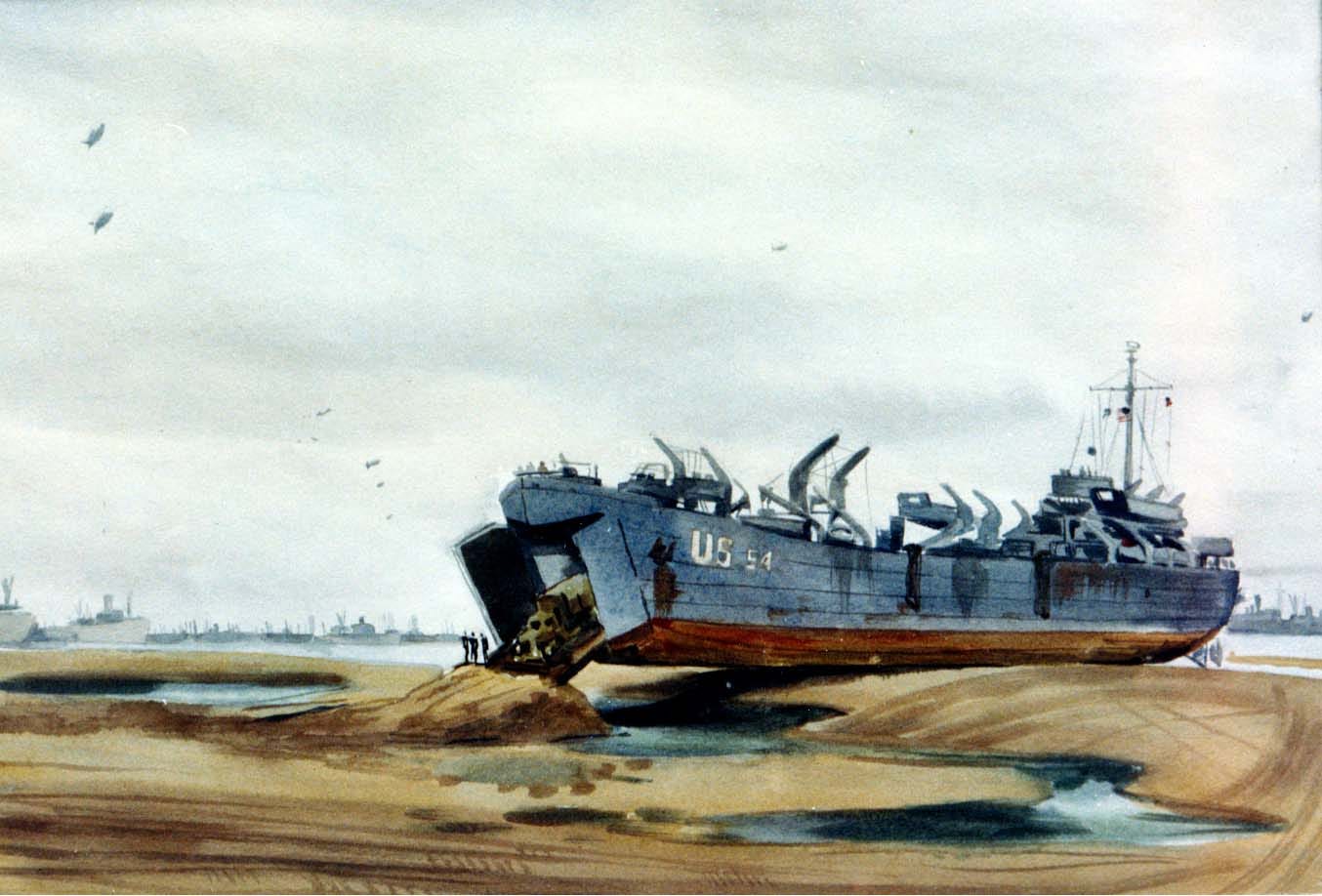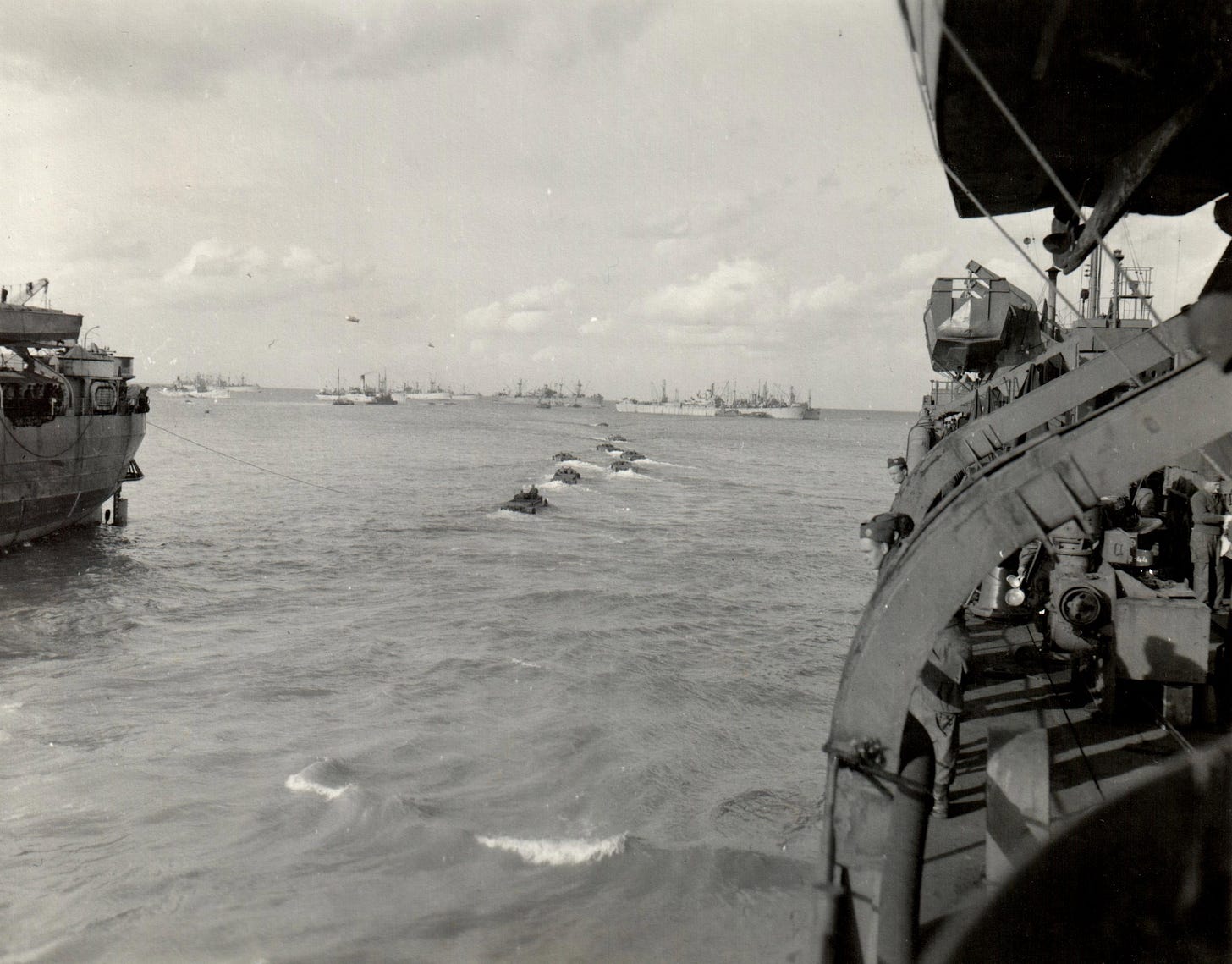Welcome to Ridgway’s Notebook, your home for airborne PME. We offer penetrating essays on military history. Through the World War II experiences of General Matthew Ridgway and the 82nd Airborne Division, we illustrate some of the similarities between the questions asked by officers of the 82nd yesterday and today—and dissect how they came to be.
My ears were instantly alert at the phrase, “a bridge too far.” When I saw it was a talking head speaking of some political misstep, my sad ears reverted to patrol mode. But my brain stayed on the job. The phrase, enduring in its purchase, turns a mind such as mine to planes, parachutes, and bridges. Yet my mind was on boats and seas. So it is fittingly ironic that the boats on their way to Gaza belong to the airborne.
I am an unsuspecting person to be pounding the table for (more) Army watercraft — the planes, parachutes, and bridges are more my thing, but turns out the fight for the bridges was a difficult thing without the boats and sea…
This week’s edition of Ridgway’s Notebook, and the reason for this unlikely turn of events, is found over at The Company Leader. Don’t miss out!
In Cider’s Footsteps — Then and Now
Things have been quiet here at RN. For the past many days, we have been following the trail through Western Europe blazed by the 504th PIR, which has prevented my regular Saturday essay. However, this sacrifice was on the alter of gaining new material. I am presently penning a piece inspired by my visit to Bra-Sur-Lienne, which will flush out one of Colonel Tucker’s trademark tactical principles and paint a decadent aspect of the regiment’s experience in the Battle of the Bulge. But until that time, we will have a little “then and now,” from nearby Trou-de-Bra.
Readers of Battle Surgeons will recognize this scene from a wartime photo included in the book.
On the street here is where Capt Halloran treated Lt Garrison (2-504) after being wounded by a 155 shell during the duels at en Floret. Following this, here, Halloran suffered some of his deepest depression of the war and wrote those sharp feelings quoted in Battle Surgeons.
The Regimental S-1 section was in the orphanage attached to the church on the right, with the S-3 section in the white house across the street (I believe). Colonel Tucker’s quarters are out of view around the bend across the small bridge over the Lienne.
Drones, Drones, Drones
“Autonomous systems” seems to have become an answer. It’s sometimes used to explain away a hard answer. I’ve heard general officers, this one specifically referring to medical evacuation, employ the phrase to answer a question of investment as if autonomous systems will solve his problems on the next battlefield. You can take the driver away, but if your autonomous system is struck, you’ve still lost your platform. The soldier bleeding in Role 2 who is now stuck doesn’t especially care if a driver was killed or not.
There’s a lot that goes into the sustainment of autonomous systems. Admittedly it’s a subject which I, a simple historian, am still grasping. But I was hit and surprised by some of Rob Lee’s comments on how labor intensive — in human labor — these autonomous systems are. And maybe you will too. There are never easy answers, just different ones.
And so, rather than “Read of the Week,” we will have…









Drones and automation have been the answer of Colonels and Generals for years. They can’t lead people, so automation is the answer. That the people who have been using automation or working on robotics and AI for decades disagree shall not be brought to their attention, unless it is bought to them by industry bearing stock options.
“If there’s no money in it, no General Officer will talk to you.”
That was said to me, if you want to know what about it’s on my stack. Netwar. (Not a penny with a gun in my nethers. No. )
You see. Our beloved country monetizes and financializes everything, so we have a monetized GOFO* Corps.
This would be barely tolerable if they were winners.
But They are losers.
*GOFO - General Officer Flag Officer, Generals and Admirals.